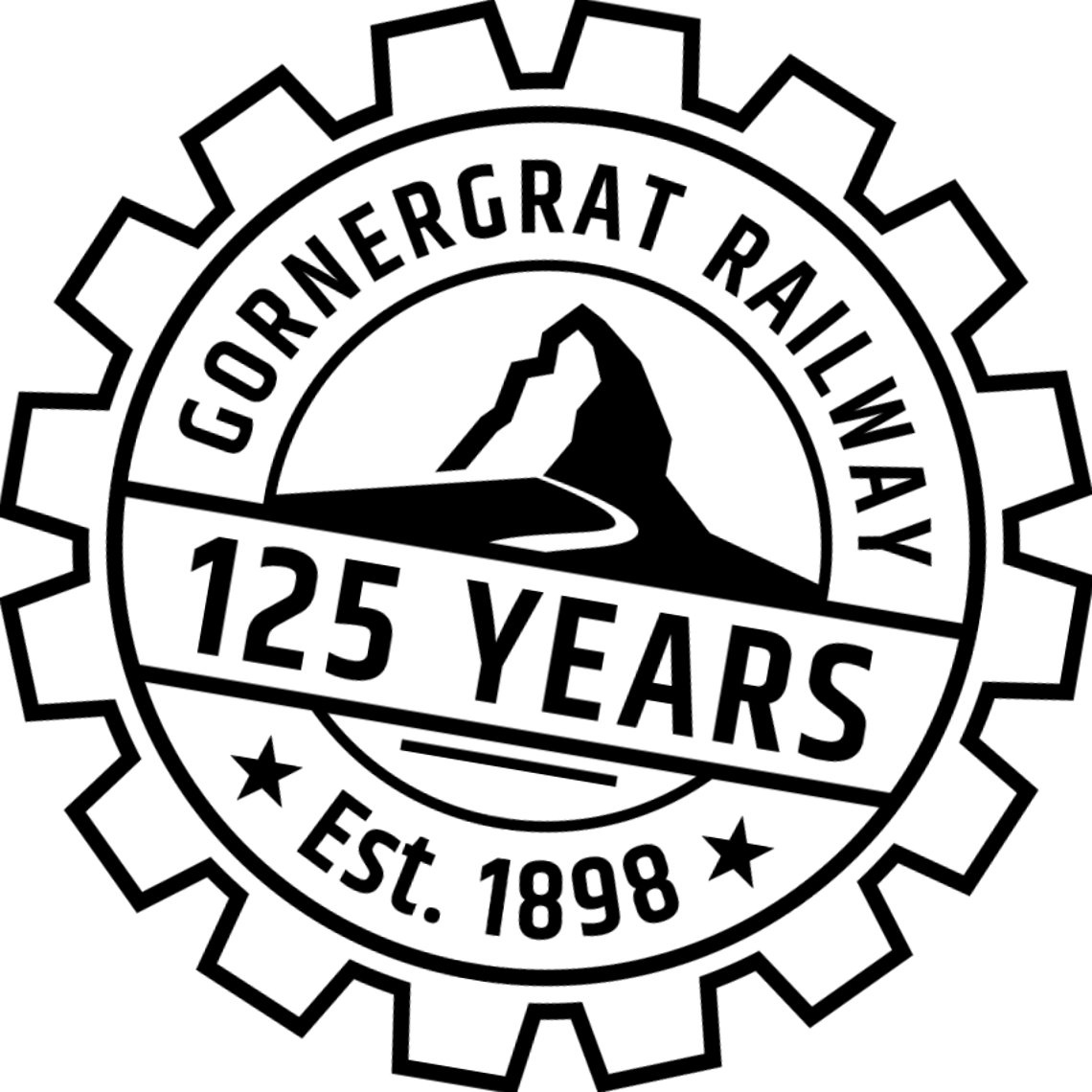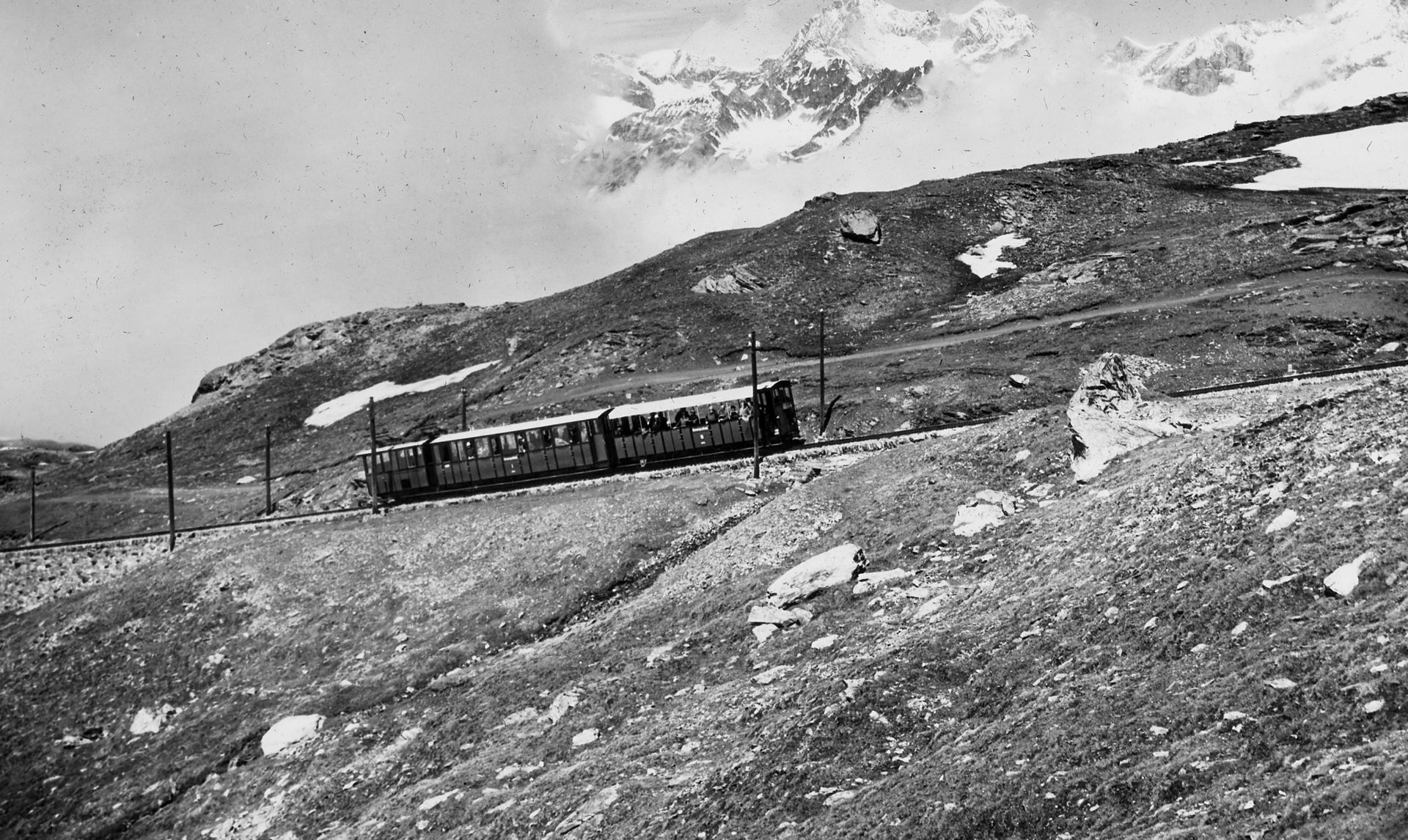Nine kilometres uphill
Story 9
The project planners from Greulich & Haag planned the route of the Gornergrat Railway to blend into the terrain as well as possible. They also opted for a line that was gentle on the landscape, combining unforgettable travelling pleasure with panoramic views of the mountains. At the beginning, the line covered a distance of 9,029 metres, with the terminus 71 metres lower in 1898 than it is today. In 1905, the railway managers decided to relocate the terminus to 3,089 m.a.s.l. Construction of the new section began in 1907.
On 1 June 1909, the trains of the Gornergrat Railway entered the new Gornergrat station for the first time. Since then, the line has covered nine kilometres and 339 metres. Of these, 97.3% are inclines and 2.7% are horizontal. At present, 3.8 kilometres, just under half the route, has been upgraded to a double track. This makes it possible for uphill and downhill trains to cross.
The tunnels and galleries have a total length of 1,364 m. This corresponds to 14.4% of the line. The Gornergrat Railway is thus the highest open-air rack railway in Europe. It also crosses five bridges and short viaducts over a distance of 127 metres, including the Vispa bridge (24 m) and the Findelbach bridge (90 m).
155,000 cogs
The entire track is equipped with the rack-and-pinion system developed by the engineer Abt. Around 155,000 cogs help the train to travel the route from Zermatt to the Gornergrat. The Swiss mechanical engineer, inventor and entrepreneur Carl Roman Abt lived from 1850 to 1933.
By the way: 44 kilometres of the Matterhorn Gotthard Bahn line are equipped with the Abt rack-and-pinion system.


